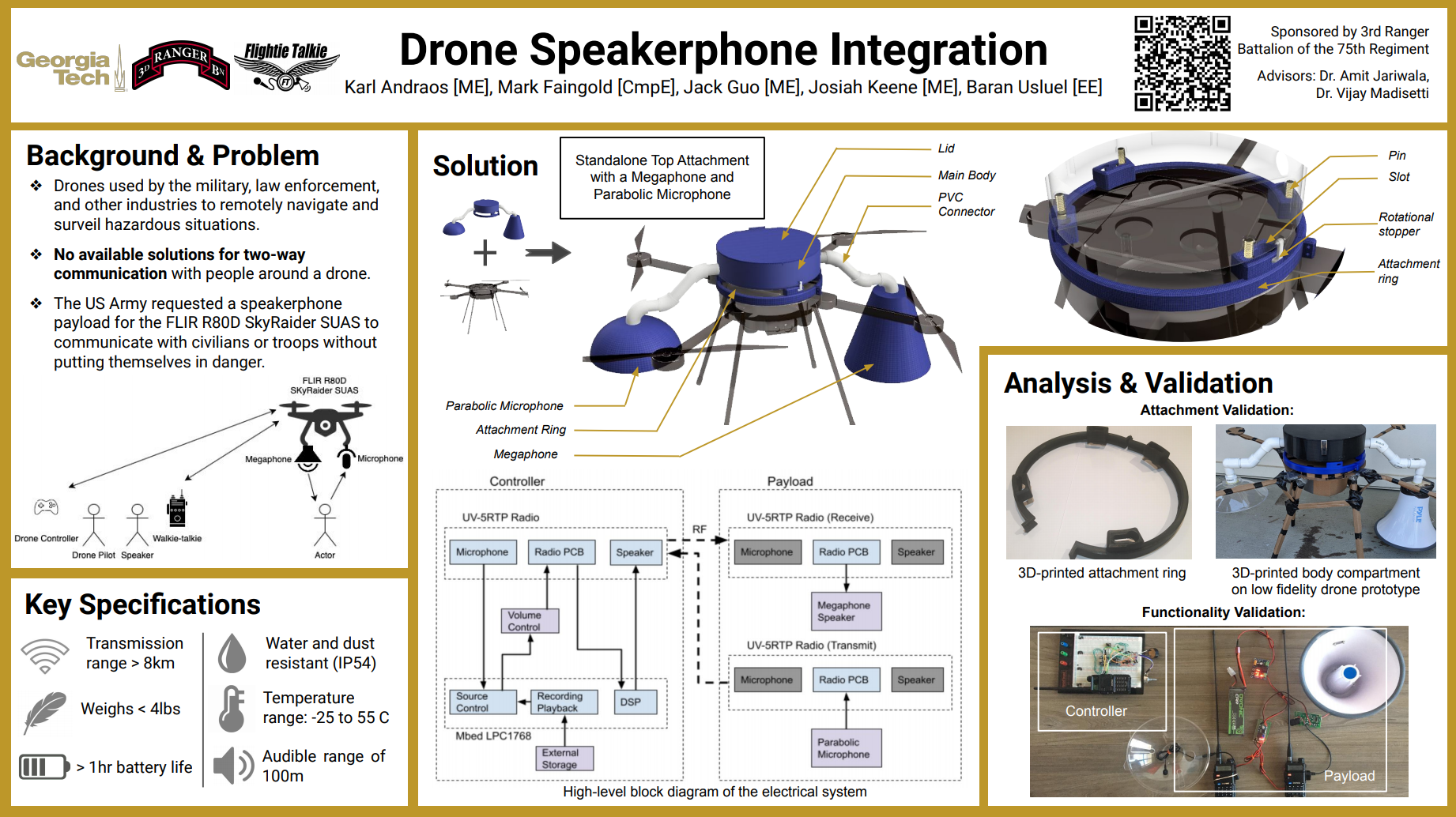This week we spoke with Rusit Patel about his team, Best Team No Cap, a Capstone Design Group sponsored by The Coca-Cola Company. His team set out to create a methodology for optical data collection as well as a comprehensive software package for data analysis. Below is his interview with us; keep reading to learn more!
Q: Could you give us a brief description of your project for those who may not know about it?
A: Sure, our project focused on improving optical measurements of sugar mixing processes to yield the best mixing processes for Coca-Cola’s new Freestyle machines that are in development. We utilized a planar laser-induced fluorescence (PLIF) laser to illuminate dye in various high-fructose corn syrup mixtures to capture images and develop algorithms to measure the sugar concentration at an accuracy of +/- 0.5° Brix
Q: Where did you first draw inspiration for the idea of the “Optical Measurements of Beverage Mixing,” for your Capstone Design Project? At first, we weren’t sure how we would tackle this problem.
A: We decided to consider the applications of the technology we were trying to create, and how it could be used in the field. For example, we thought about how this issue falls into quality and how the solution we create could be implemented in a manufacturing application. This helped us come up with ideas that we ultimately brought to fruition. Coca-Cola had already established the problem of not being able to take accurate measurements. Utilizing our team’s various backgrounds and experiences in mechanical engineering and computer science projects and internships, we were able to create a solution and exceed the expectations set by Coke.
Q: What was the design process like and how did you and your teammates come together to finish your project?
A: It definitely involved a ton of Microsoft Teams calls and GroupMe messages. As we came up with ideas we would send them in GroupMe and discuss on Microsoft Teams, letting everyone voice their opinions and ending meetings with decisions made and ideas decided upon. Sometimes, we would also spend a day or two brainstorming to ourselves and then coming back to the team and discussing what we came up with.
Q: What were some of the problems that you faced along the way and how did you overcome those obstacles?
A: One major hurdle to tackle was creating a procedure for gathering data. Figuring out the ideal settings for dye concentrations, camera settings, and laser settings involved input from all teammates. Since we had to be in the lab to gather data in person, we had certain members assigned to the same tasks to ensure consistent data was being gathered. We would also consistently test for COVID-19 before meeting in person.
Q: How did it feel to present your project virtually?
A: I think it was definitely more comfortable and easier to manage being able to present virtually. After figuring out how to use Gatherly and having people on the team ready to present and screen share the PowerPoint, it was very easy to present the project and answer any questions that judges and attendees had.
Q: How did it feel to work with a Coca-Cola company and how did they help you with the creation of your project?
A: We were quite fortunate to work with a company as massive and innovative as CocaCola. They were very helpful and supportive of any ideas we had and helped us with the initial equipment setup, any troubleshooting from past engineers on the project, and were always willing to meet with us to hear about updates and give feedback.
Q: What do you think made your team successful in creating your project?
A: I think having a team that was different in their backgrounds and had a serious interest in the project really helped us succeed. Having a growth mindset and curiosity to learn across the board definitely helped us accomplish more than we thought we would have. We also played to each other’s strengths and assigned tasks based on people that were well-suited to take them on.
Q: Do you have any advice for future teams?
A: Be passionate about what you are doing and the problem you are trying to tackle. If you are genuinely interested and want to learn, there are no limits to what you and your team can accomplish!
Thank you Rusit for sharing your project with us!









